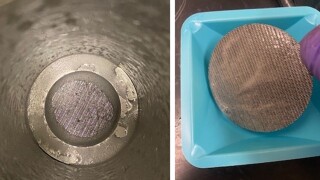Fracturing/pressure pumping
Technology developers expect the tight-oil industry to give lightweight proppants another look after the Permian Basin’s biggest operator becomes an adopter.
In this third work in a series, the authors conduct transfer-learning validation with a robust real-field data set for hydraulic fracturing design.
This paper describes development of a high-temperature water-based reservoir drill-in fluid using a novel synthetic polymer and customized with optimal chemical concentrations and sized calcium carbonate.
-
Dubai Petroleum embarked on a new mission last year to drill and complete its first multistage, hydraulically fractured, and propped horizontal well from an offshore platform.
-
Saudi Aramco has begun moving toward the production phase of its ambitious plan to develop its enormous hoard of unconventional gas resources.
-
In organic shales, hydraulic fracturing is important for optimizing the production of horizontal wells. For a standalone lateral, the propped surface should be maximized to increase production. In the case of a pad, well spacing is an additional factor.
-
This paper offers an alternative explanation for the early boundary-dominated flow related to dissolution of salt-sealed natural fractures in the shale.
-
On the basis of production data, diagnostic methods, and field observations, it is becoming increasingly clear that induced unpropped fractures created during the hydraulic-fracturing operation play a critical role in determining the success of fracture treatments.
-
One study is showing that when pumping a proppant into a fracture, a little bit of extra effort might increase performance.
-
A long-time energy industry executive and chemical engineer has built a new water treatment system that he says can increase recovery rates from shale wells without using chemicals and will recycle all the water used in the process.
-
Openhole multistage (OHMS) systems are more cost-effective than the cemented casing plug-and-perf (CCPP) techniques for increasing production and reducing development costs.
-
This paper presents results from the analysis of the effect of in-fill drilling on parent-well performance, and describes a simplistic approach to understanding the effect of the quest for operational efficiencies and economic cycles on development strategies.
-
A service using pressure data from a few nearby unconventional wells to map fracturing will soon be for sale.













